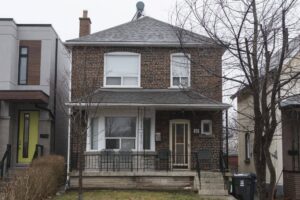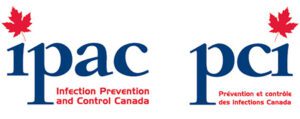Are You Worried about your home’s air quality?
Are You Worried about your home’s air quality?
Are you worried about your home’s air quality? As we move further into 2019 we are seeing more and more cases if homes with poor heating, air conditioning and ventilation systems that contribute directly to poor air quality and increased levels of mold and other harmful toxins and gases. Over the long term increases in these types of allergins, toxins and gases can damage your health as well as adversely impact the health of your family.
Did you ever have extreme fatigue, dizziness, nausea, headache or some other unexplained discomfort in your home or even at the office that seem to clear away as soon as you are out of the building? If you answer yes, then you could be a victim of poor air quality in your home or workplace.

What Is A Sick Home Syndrome or Sick Building Syndrome?
Sick Home / Building Syndrome, or SH/BS, refers to a range of unrelated health symptoms that appear to be linked to the time one spends in a building.
When those symptoms appear in not just one but multiple people who occupy the same building, and they resolve on their own after the occupants leave the building, then chances are you could be a victim of SH/BS.
Symptoms of SH/BS
Victims of SH/BS usually suffer from symptoms that cannot be attributed to a specific illness or cause. The symptoms include:
- Dizziness
- Headache
- Eye, nose, and/or throat irritation
- Coughing
- Nausea
- Dry, itchy skin and/or rashes
- Fatigue
- Irritability
- Inability to concentrate
- Sensitivity to odours
What Are the Causes of SH/BS
SH/BS can be due to multiple reasons and these include:
- Poor Ventilation – Many residential and commercial buildings are constructed airtight in which windows are tightly sealed. Even when the windows are not sealed, they are usually not opened frequently enough to allow fresh air to enter every storey in the building.As a result, stale air is constantly being re-circulated and reused. If the building is not equipped with a proper air filtration system, the air in the home or building will accumulate more and more particles and volatile chemicals that are harmful to health.Poorly maintained heating, ventilating and air conditioning systems that fail to distribute air effectively throughout the building also worsen indoor air quality and in turn become a source of air contaminants.
- Furniture and Computer Equipment – Unknown to many, common furniture, electronic devices and other computer-related equipment can off-gas a host of volatile chemicals, (VOC’s), into the air.These unsuspected sources of air contaminants include: upholstery, glues, adhesives, correction fluids, permanent markers, paints, lacquers, varnishes, carpets, manufactured wood products, printers, fragrances, pesticides, and cleaning agents.Volatile chemicals, like formaldehyde, are emitted as vapours that cannot be seen by the naked eyes, and some are found to have adverse effects on our health.Some volatile chemicals, which were previously thought to be toxic only at certain levels, have also been found to be health damaging even at much lower levels. Studies also suggest that different volatile chemicals may also react, or combine, to create byproducts that can cause a host of symptoms.
- Cigarette Smoke and Exhaust Fumes – Cigarette smoke and diesel exhaust fumes that found their way into the building may cause chronic and acute health effects due to their high amounts of toxic chemicals and respirable particles.Airborne chemicals and compounds found in tobacco smoke and exhaust fumes contained known carcinogens. Previously classified only as a possible carcinogen, the World Health Organization upgraded exhaust fumes as a definite cause of lung cancer in June 2012, placing it in the same risk level as arsenic, asbestos and other carcinogenic substances.
- Biological Allergens – Bacteria, molds, viruses, pollen, dust mites, animal danders are some common indoor allergens found in office buildings and residences.They can breed and accumulated in ducts, stagnant water, drain pans, air conditioners and humidifiers, and trigger allergic reactions in susceptible individuals.Physical symptoms include coughing, chest tightness, fever, chills, muscle aches, and allergic responses such as mucous membrane irritation and upper respiratory congestion.For example, Legionella, an indoor bacterium, can cause Legionnaire’s Disease and Pontiac Fever when inhaled.\
- Trapped Outdoor Pollutants – External air pollutants from motor vehicle exhausts, plumbing vents and building exhausts in places like toilets and pantries can enter the building through poorly located air intake vents, windows and other openings.In addition, combustion products can also enter a building from a nearby garage
Low to moderate levels of multiple volatile organic chemicals released by office equipment, paint, cleaning products, radon, lead paint, asbestos, pesticides, building materials as well as building furnishings can also produce acute reactions.Further, combustion products such as carbon monoxide, nitrogen dioxide, as well as respirable particles can also come from unvented kerosene and gas space heaters, wood stoves, fireplaces and gas stoves.
How to Combat SH/BS
Here are some suggestions to address the accumulation of harmful fumes and vapours within buildings:
- Conduct Air Analysis & Investigation – To tackle Sick Home / Building Syndrome (SH/BS), it is important to first identify the sources of air contaminants so that steps can be taken to remove them.If you suspect that your building is sick, we can help you identify and analyse the air and conduct an investigation to weed out the sources of indoor air pollution.
- Improve Air Ventilation – This is the simplest way to reduce indoor air pollutants. Whenever possible, windows should be opened to allow fresh air to enter the building as well as to carry away stale air.Malfunctioning heating, ventilating, and air conditioning systems should also be repaired to ensure they meet building ventilation standards in local building codes. In the US, that means approximately 20 cubic feet per minute of indoor air per person.
- Remove Identified Air Contaminants – When the causes of SH/BS have been identified, such as the growth of molds under moist ceiling tile and carpeting, measures should be taken to remove or reduce them.Some measures may require a change in building management policies. For instance, if tobacco smoke is identified as a source of SH/BS, it may be necessary to institute new rules to stop smoking within the home or building.In addition, it may also be necessary to enforce regulations in the use and storage of chemicals that can pollute indoor air, such as paints, adhesives, solvents and pesticides.
- Purify Air with Air Cleaners – The use of air cleaning device is a good complementary measure to improve indoor air quality. But air cleaners will not improve indoor air quality much if the source of air pollution is not removed. Hence, removing the cause of SBS is still the most important step to improving air quality.There are many types of air filters available. They include mechanical filters, electronic air cleaners and the ion generators. When you know what is polluting your air, you will find it easier to find an air cleaning device that meets your needs.Mechanical filters are good for removing air particles and they generally come in two types: flat or pleated . Flat filters are effective in collecting large particles, while pleated filters such as the HEPA filters are best for trapping smaller ones as tiny as 0.3 microns in size.Electronic air cleaners and ion generators produce electronic charges to remove airborne particles. Some devices may also produce ozone which can irritate the lungs. So it is essential to ask about ozone emission when you are shopping for an air filter.The ability of air cleaners to reduce air pollutants is measured by Clean Air Delivery Rate, a handy standard you can use to compare between different air cleaners.In addition to removing air particles, some air cleaners also contain special materials such as activated charcoal that remove unwanted odours and harmful gases. However, they should not be expected to adequately remove all gaseous pollutants typically present in indoor air.
Regardless of the type and model of air cleaner you use, the device should be maintained periodically, which includes replacing the filters according to manufacturer’s instructions, to ensure that it is functioning at its optimum level.
Increase awareness about SH/BS – Increasing occupants’ awareness about indoor air quality is also an important step to reducing air pollutants. Building occupants may be polluting indoor air without realising, such as improper storage of highly volatile chemicals and smoking within enclosed area.By educating all occupants about the impact of their actions, as well as the causes and consequences of SH/BS, existing air quality can be improved collectively and future indoor air pollution can also be prevented.

Maple Leaf Mold Inc. is a certified mold / asbestos removal and biological disinfection / air analysis company located in Toronto that uses certified IICRC technicians for all testing and remediation projects.
We are a professionally licensed firm experienced in testing, verifying and removing Mold / Asbestos / Lead and other environmental contaminants as well as providing disinfection services to control and kill biological contaminants.
Call 416-254-7256 to talk with us about your issue anytime.



